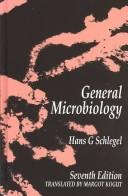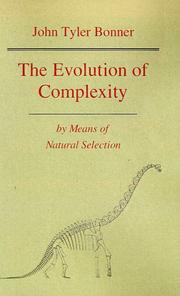| Listing 1 - 4 of 4 |
Sort by
|
Book
Year: 2021 Publisher: Basel, Switzerland MDPI - Multidisciplinary Digital Publishing Institute
Abstract | Keywords | Export | Availability | Bookmark
 Loading...
Loading...Choose an application
- Reference Manager
- EndNote
- RefWorks (Direct export to RefWorks)
This Special Issue collects novel contributions from scientists in the interdisciplinary field of biomolecular evolution. Works listed here use information theoretical concepts as a core but are tightly integrated with the study of molecular processes. Applications include the analysis of phylogenetic signals to elucidate biomolecular structure and function, the study and quantification of structural dynamics and allostery, as well as models of molecular interaction specificity inspired by evolutionary cues.
Research & information: general --- Biology, life sciences --- power law --- Brownian process --- Kolmogorov complexity --- entropy --- chaos --- monofractal --- non-linear --- cumulative sum --- sequence analysis --- protein engineering --- direct coupling analysis --- evolutionary coupling analysis --- contact prediction --- phylogenetic bias --- phylogeny --- co-evolution --- coevolutionary analysis --- direct-coupling analysis --- specificity determining contacts --- sequence reweighting --- maximum entropy models --- protein contact predictions --- TEM-1 --- TOHO-1 --- PBP-A --- DD-transpeptidase --- conformational changes --- catalytic mechanism --- evolution --- epistasis --- allostery --- elastic network model --- protein conformational dynamics --- statistical inference --- mutational phenotypes --- interaction specificity --- phosphorylation --- fitness landscape --- bacterial signaling --- power law --- Brownian process --- Kolmogorov complexity --- entropy --- chaos --- monofractal --- non-linear --- cumulative sum --- sequence analysis --- protein engineering --- direct coupling analysis --- evolutionary coupling analysis --- contact prediction --- phylogenetic bias --- phylogeny --- co-evolution --- coevolutionary analysis --- direct-coupling analysis --- specificity determining contacts --- sequence reweighting --- maximum entropy models --- protein contact predictions --- TEM-1 --- TOHO-1 --- PBP-A --- DD-transpeptidase --- conformational changes --- catalytic mechanism --- evolution --- epistasis --- allostery --- elastic network model --- protein conformational dynamics --- statistical inference --- mutational phenotypes --- interaction specificity --- phosphorylation --- fitness landscape --- bacterial signaling
Book
Year: 2022 Publisher: Basel MDPI - Multidisciplinary Digital Publishing Institute
Abstract | Keywords | Export | Availability | Bookmark
 Loading...
Loading...Choose an application
- Reference Manager
- EndNote
- RefWorks (Direct export to RefWorks)
Antimicrobial-resistant bacterial infections are a major and costly public health concern. Several pathogens are already pan-resistant, representing a major cause of mortality in patients suffering from nosocomial infections. Drug efflux pumps, which remove compounds from the bacterial cell, thereby lowering the antimicrobial concentration to sub-toxic levels, play a major role in multidrug resistance. In this Special Issue, we present up-to-date knowledge of the mechanism of RND efflux pumps, the identification and characterization of efflux pumps from emerging pathogens and their role in antimicrobial resistance, and progress made on the development of specific inhibitors. This collection of data could serve as a basis for antimicrobial drug discovery aimed at inhibiting drug efflux pumps to reverse resistance in some of the most resistant pathogens.
Research & information: general --- Biology, life sciences --- Microbiology (non-medical) --- MdtF (YhiV) --- multidrug resistance --- RND-type efflux pump --- dye accumulation --- real-time efflux --- pathogens --- RND --- evolution --- efflux pump --- adaptation --- Aliarcobacter butzleri --- RND efflux pumps --- virulence --- resistance --- RND pump --- dominant negative effect --- assembly --- protein-protein interaction --- mutation --- drug resistance --- cystic fibrosis --- prevalence of efflux resistance mechanisms --- hospital acquired infections --- antibiotic resistance --- allostery --- antimicrobial resistance --- conformational changes --- energetic transition --- gram-negative bacteria --- pump activation --- MdtF (YhiV) --- multidrug resistance --- RND-type efflux pump --- dye accumulation --- real-time efflux --- pathogens --- RND --- evolution --- efflux pump --- adaptation --- Aliarcobacter butzleri --- RND efflux pumps --- virulence --- resistance --- RND pump --- dominant negative effect --- assembly --- protein-protein interaction --- mutation --- drug resistance --- cystic fibrosis --- prevalence of efflux resistance mechanisms --- hospital acquired infections --- antibiotic resistance --- allostery --- antimicrobial resistance --- conformational changes --- energetic transition --- gram-negative bacteria --- pump activation

ISBN: 052127270X 0521252776 9780521252775 9780521272704 Year: 1986 Publisher: Cambridge : Cambridge University Press,
Abstract | Keywords | Export | Availability | Bookmark
 Loading...
Loading...Choose an application
- Reference Manager
- EndNote
- RefWorks (Direct export to RefWorks)
microbiologie --- biologie --- General microbiology --- MICROBIOLOGY --- Microbiology --- 579 --- Microbial biology --- Biology --- Microorganisms --- 579 Microbiology --- Infectious Disease Medicine --- Microbiology. --- Basic Sciences. Microbiology --- Microbiology (General). --- microorganisms --- Bacteria --- Fungi --- Fermentation --- cell structure --- Virus --- viruses --- Microbial properties --- viruses. --- Manuel --- BIODEGRADATION --- NITROGEN FIXATION --- PHOTOSYNTHETIC BACTERIA --- CHEMOAUTOTROPHS --- ORGANIC COMPOUNDS --- PRODUCTION --- ELECTRON TRANSPORT --- ANAEROBIC CONDITIONS --- FERMENTATION --- ENERGY METABOLISM --- METABOLISM --- MICROORGANISMS --- FUNGI --- VIROLOGY --- PROKARYOTIC CELLS --- CELL MORPHOLOGY --- MICROBIAL ECOLOGY --- ALLOSTERY --- REGULATION --- GENETICS --- PREPARATION --- GROWTH --- CLASSIFICATION --- TEXTBOOKS

ISBN: 0691084947 Year: 1988 Publisher: Princeton : Princeton University Press,
Abstract | Keywords | Export | Availability | Bookmark
 Loading...
Loading...Choose an application
- Reference Manager
- EndNote
- RefWorks (Direct export to RefWorks)
John Tyler Bonner makes a new attack on an old problem: the question of how progressive increase in the size and complexity of animals and plants has occurred. "How is it," he inquires, "that an egg turns into an elaborate adult? How is it that a bacterium, given many millions of years, could have evolved into an elephant?" The author argues that we can understand this progression in terms of natural selection, but that in order to do so we must consider the role of development--or more precisely the role of life cycles--in evolutionary change. In a lively writing style that will be familiar to readers of his work The Evolution of Culture in Animals (Princeton, 1980), Bonner addresses a general audience interested in biology, as well as specialists in all areas of evolutionary biology. What is novel in the approach used here is the comparison of complexity inside the organism (especially cell differentiation) with the complexity outside (that is, within an ecological community). Matters of size at both these levels are closely related to complexity. The book shows how an understanding of the grand course of evolution can come from combining our knowledge of genetics, development, ecology, and even behavior.
Biological Evolution. --- Models, Genetic. --- Population Dynamics. --- 575.8 --- Demographic Aging --- Demographic Transition --- Optimum Population --- Population Decrease --- Population Pressure --- Population Replacement --- Population Theory --- Residential Mobility --- Rural-Urban Migration --- Stable Population --- Stationary Population --- Malthusianism --- Neomalthusianism --- Aging, Demographic --- Decrease, Population --- Decreases, Population --- Demographic Transitions --- Dynamics, Population --- Migration, Rural-Urban --- Migrations, Rural-Urban --- Mobilities, Residential --- Mobility, Residential --- Optimum Populations --- Population Decreases --- Population Pressures --- Population Replacements --- Population Theories --- Population, Optimum --- Population, Stable --- Population, Stationary --- Populations, Optimum --- Populations, Stable --- Populations, Stationary --- Pressure, Population --- Pressures, Population --- Replacement, Population --- Replacements, Population --- Residential Mobilities --- Rural Urban Migration --- Rural-Urban Migrations --- Stable Populations --- Stationary Populations --- Theories, Population --- Theory, Population --- Transition, Demographic --- Transitions, Demographic --- Genetics, Population --- Genetic Models --- Genetic Model --- Model, Genetic --- Evolution, Biological --- Sociobiology --- Evolution. Origin of species. Phylogeny --- Evolution (Biology) --- Natural selection. --- Evolution --- Models --- Population dynamics --- genetic --- Life History Traits --- Evolution (Biology). --- Evolution. --- Population dynamics. --- genetic. --- 575.8 Evolution. Origin of species. Phylogeny --- Natural selection --- Biological Evolution --- Models, Genetic --- Population Dynamics --- Darwinism --- Selection, Natural --- Genetics --- Variation (Biology) --- Biological invasions --- Heredity --- Animal evolution --- Animals --- Biological evolution --- Evolutionary biology --- Evolutionary science --- Origin of species --- Biology --- Biological fitness --- Homoplasy --- Phylogeny --- Genetic. --- razvojna biologija --- evolucija --- anatomija --- gostota naseljenosti --- razporeditev naseljenosti --- etologija. --- darwinizem --- fosili --- kompleksnost --- velikost telesa --- združbe --- populacije. --- Darwinian evolution. --- Dictyostelium. --- Hutchinson ratio. --- Kirschner, M. --- Lamarckism. --- aclonal organisms. --- acrasids. --- allostery. --- apical meristem. --- behavior. --- cambium. --- cell competition. --- conquest of land. --- convergent evolution. --- developmental constraints. --- dictyostelids. --- dominance hierarchy. --- earthworms. --- ecology. --- elastic similarity. --- endoskeleton. --- energid. --- food chains. --- gene net. --- genetic drift. --- habituation, in Stentor. --- heterochrony. --- heterocysts. --- inductors, in development. --- integrating mechanisms. --- isolating mechanisms. --- jellyfish. --- kelp. --- lichens. --- liverworts. --- macronucleus. --- mammals. --- metamorphosis. --- mosaic development. --- natural selection. --- nematocytes. --- neurotransmitter. --- notochord. --- pattern formation. --- pioneering. --- population biology. --- punctuated equilibria. --- regulative development. --- scavengers. --- siphonophores. --- species formation.
| Listing 1 - 4 of 4 |
Sort by
|

 Search
Search Feedback
Feedback About UniCat
About UniCat  Help
Help News
News